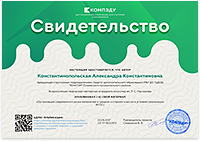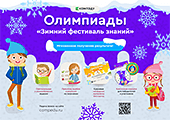| Long-term plan Unit : Health and body | School: Asenkritovskaya secondary school | ||||||||
| Date: | Teacher’s name: Artykbayeva B.A. | ||||||||
| Grade: 2 | Number present: | absent: | |||||||
| Theme of the lesson: | Parts of the body | ||||||||
| Learning objectives(s) | 2. R1recognise, sound and name the letters of the alphabet 2.W3 write familiar words to identify people, places and objects 2.S3 pronounce familiar words and expressions intelligibly 2.L1 recognise short basic instructions for a limited range of classroom routines spoken slowly and distinctly
| ||||||||
| Lesson objectives | All learners will be able to:
Most learners will be able to:
Some learners will be able to: - complete all worksheets correctly. | ||||||||
|
| |||||||||
| Success criteria | Learners have met this learning objective if they can: - pronounce all alphabet letters without mistakes - write, pronounce and spell vocabulary parts of the body -do most of tasks correctly. | ||||||||
| Value links | Ls will work together as a group showing respect and being polite with each other. | ||||||||
| Cross curricular links | Primary Science | ||||||||
| ICT skills | PPT, Video, the use of whiteboard | ||||||||
| Previous learning | The natural environment | ||||||||
| Plan | |||||||||
| Planned timings | Planned activities | Resources | |||||||
| Beginning
1min
| 1. Приветствие. Good morning, children! We are glad to see you!(врукахХипо) A для начала я попрошу вас подойти к доске и приклеить стикер на тот смайлик, который соответствует вашему настроению. - У: Ребятки, мы с Хиппо очень рады вас видеть. И сегодня к нам пришли гости, которые хотят посмотреть как вы дружно работаете на уроке и чему вы научились. T: Sit down, please. Thank you. T: Nikita, how are you? P1: I’m OK, thank you. T: Where are you from? P2: I am from Kazakhstan. And so on ….
| 2 smiles | |||||||
| Phonetic ex-es
1 min
| T.: Listen to me and repeat after me. Отработказвука [w] Why do you cry, Willy? Why do you cry? Why, Willy? Why? Willy? Why, Willy? Why?
| | |||||||
| Middle 33 mins | T:-Children, look at the blackboard! What’s this? (на доске расположены картинки с изображением частей тела) Ps: Руки, ноги, голова, … T: Верно. А все вместе это как называется? Правильно! Части тела. И как вы уже догадались тема сегодняшнего урока «Части тела», а по-английски это звучит так «Parts of body». Ребята, у меня для вас очень грустная новость. Сегодня к нам на урок собирался прилететь робот ПИ с другой планеты, но случилось несчастье из-за плохой погоды. Ребята, вы не знаете кому в таких случаях нужно обращаться? Верно, в «Службу спасения». А кто из вас знает номер телефона? Хорошо я вам подскажу, а вы его запоминайте 911. Запомнили 911! Давайте же скорее звонить. Учитель набирает номер и говорит: «Алло. Это служба спасения. Доброе утро. Пожалуйста, помогите нам с ребятами! Спасите робота ПИ. Обещаю вам, ребята будут очень хорошо работать на уроке.» Ребятки, они обещали доставить нам робота Пи, но с одним условием. Вы должны активно работать на уроке и быть очень внимательными. Обещаете? Ну, а теперь пора за работу. Каждая группа за правильный ответ получит звездочку. А в конце урока мы их посчитаем и скажем кто же победил. .T: Now, children, look, listen and repeat all the English words. (Ребята смотрят обучающее видео и повторяют лексику) Work in groups Task-1 Договорить рифмовку Group-1
Закаляю тело-body
И страдает моя- head.
Глаз мы называем –eye
Ухо по- английски –ear
Называю руку-arm Group-2 1) Руку протянул мне Кисть руки назвали-hand 2) Я люблю отличный бег Ногу все назвали-leg 3) Футбол все за мячом бегут Ступню мы называем –foot 4) Палец я сломал на ринге Палец по- английски –finger 5) Ну что без шеи человек? Шея по-английски … neck
Task 2 2.T: А сейчас части тела мы назовем как на английском так и на казахском языках.(предметные картинки на трех языках) Now, listen and repeat. Group-1 -Head-бас-голова -Hair-шаш- волосы -Eye-коз-глаз -Nose-мурын- нос -Mouth-ауыз- рот Group-2 -Ear-кулак-ухо -Hand-кол-кисть руки -Finger-саусак- палец руки -Leg-аяк -нога -Foot-табан –ступня T: It’s time to stand up and do some exercises “Head, shoulders, knees and toes”
Task-3 3. T:Children, look. What’s this? Yes, it’s a hat. T: Take a word, spell it and read. Group-1 - head, body, neck, shoulder, arm, hand, finger, leg, Group-2 - knee, foot, toe, hair, eye, nose, mouth, ear.
Task-4
T: Match the words with pictures
Task-5
T: Let’s play a Memory game
Учитель на доске развешивает 5 картинок с частями тела. Учащиеся проговаривают хором все картинки. Затем учитель убирает по одной картинке, а уч-ся проговаривают все картинки в такой очередности, как они были изначально развешаны, пока не останется ни одной. Задача заключается в том, чтобы они запомнили очередность и произнесли все 5 картинок
Group-1 - head, ear, nose, leg, finger
Group-2
Task-6
T: Children, take your cards and fill in the missing letters. T: Let’s count your stars. | Cards Video Pictures Video A red hat with words Worksheet 1 10 pictures F.A. Cards
| |||||||
| End 5 min |
T: Ребята, по моему кто-то стучался. Сейчас я посмотрю. (Учитель выходит за дверь и заходит с посылкой-коробкой.) Ребята «Служба спасения» доставила нам посылку. Но что же там? Открываем коробку. Детки, что же случилось с нашим роботом ПИ? Рs: Он распался на части. T:Нужно срочно собрать нашего робота ПИ. А для этого нужно правильно назвать части тела и соединить их на доске волшебными магнитиками. Итак, кто первый спасатель? P1: May I? This is a head. P2: This is a neck and so on. C) T: И так мы спасли нашего нового друга-робота ПИ. Молодцы, ребята. You are good! Thank you very much! Робот Пи благодарит вас за помощь и приготовил вам презентики. Они в этой коробке, а она к волшебным кодом- 9471. Если вы правильно назовете цифры , тогда крышка откроется. Давайте попробуем! Кто самый смелый, вперед! Правильно! А что-за подарки, да это сладости! Reflection. T: Put your stickers. I feel … Thank you for your active work. The lesson is over. Good bye! | A box with robot PI Sweets stickers | |||||||
| |
| | |||||||
| |
| | |||||||
| Additional information | |||||||||
| Differentiation – how do you plan to give more support? How do you plan to challenge the more able learners? Support for weaker students: working in pairs/groups, individually Challenges for moreable students: Encouraged to do more writing; assist weaker students. | Assessment – how are you planning to check learners’ learning? Monitoring Checking the task Feedback on the work Working with PPT whole and individual answers | Health and safety check | |||||||
| Differentiation can be by task, by outcome, by individual support, by selection of teaching materials and resources taking into account individual abilities of learners (Theory of Multiple Intelligences by Gardner). Differentiation can be used at any stage of the lesson keeping time management in mind Differentiation by task, by outcome, by individual support, by selection of teaching materials and resources taking into account individual abilities of learners. |
| Health promoting techniques Breaks and physical activities used. Points from Safety rules used at this lesson. | |||||||
| Reflection
Were the lesson objectives/learning objectives realistic? Did all learners achieve the LO? If not, why? Did my planned differentiation work well? Did I stick to timings? What changes did I make from my plan and why?
| Use the space below to reflect on your lesson. Answer the most relevant questions from the box on the left about your lesson. | ||||||||
|
| |||||||||
| Summary evaluation
What two things went really well (consider both teaching and learning)? 1:
2:
What two things would have improved the lesson (consider both teaching and learning)? 1:
2:
What have I learned from this lesson about the class orachievements/difficulties of individuals that will inform my next lesson?
| |||||||||
2





